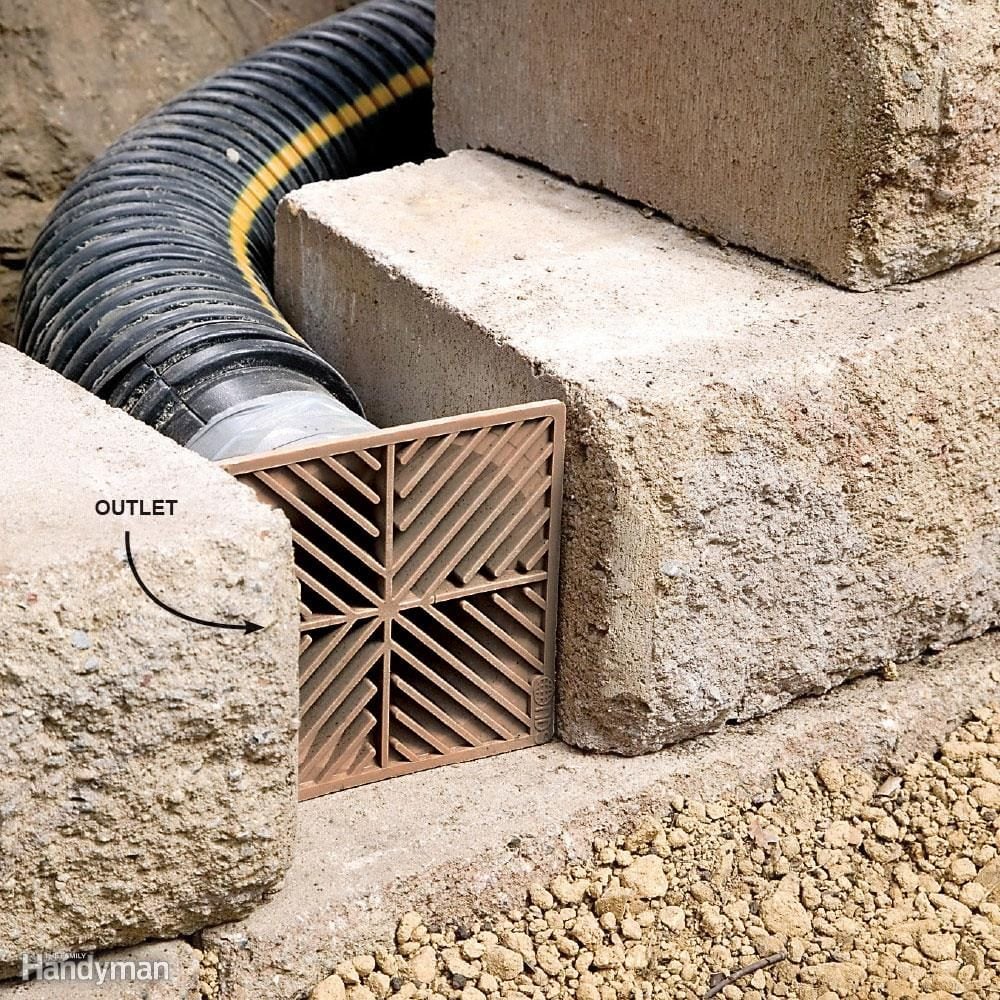Adding walls and paths made of stone or brick to your landscape transforms it into something truly special. Here's a collection of pro building tricks for easier, faster and better path and wall construction for creating your dream landscape.
17 Great Tips for Landscaping Your Backyard
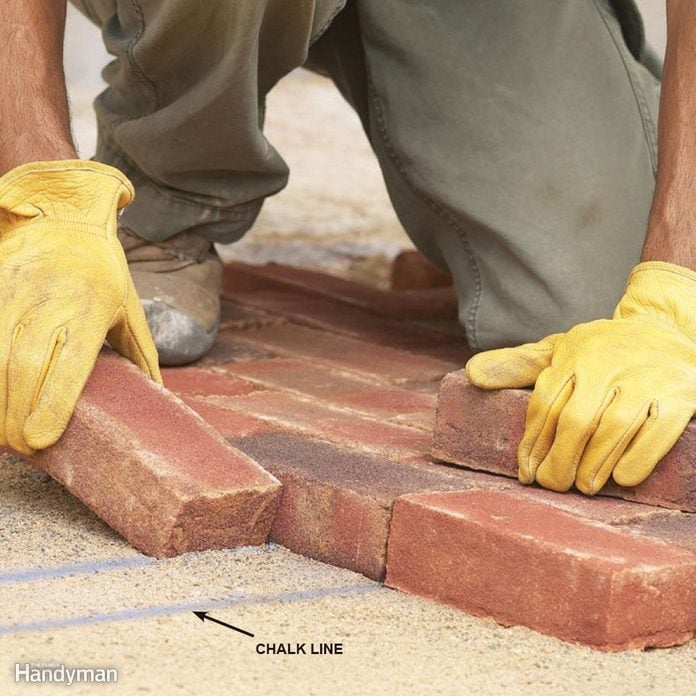
Snap Lines on the Sand
You can stretch a string between stakes to create a layout line for setting bricks, but simply snapping a chalk line in the sand is quicker, plus you don’t have a string in the way. With layout lines snapped on the sand, laying bricks is faster and easier. The chalk won’t stick to dry sand, so you may have to mist the sand with water before snapping lines. Then snap layout lines directly on the sand using a standard carpenter’s chalk line reel.
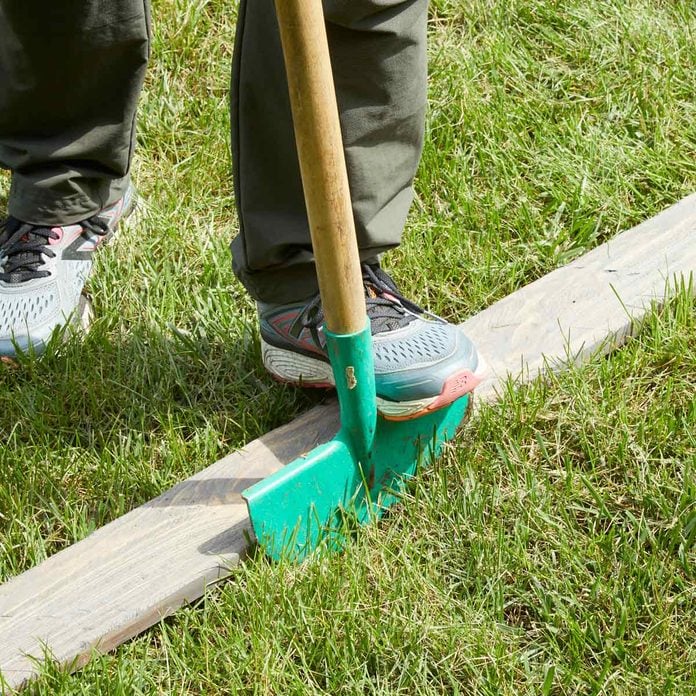
Simple Lawn Edging
To edge your lawn, garden, or flowerbed, lay down a 2×6. While holding the board with your foot, drive a flat spade along the board’s edge. Move the board as needed to create a clean, straight line.
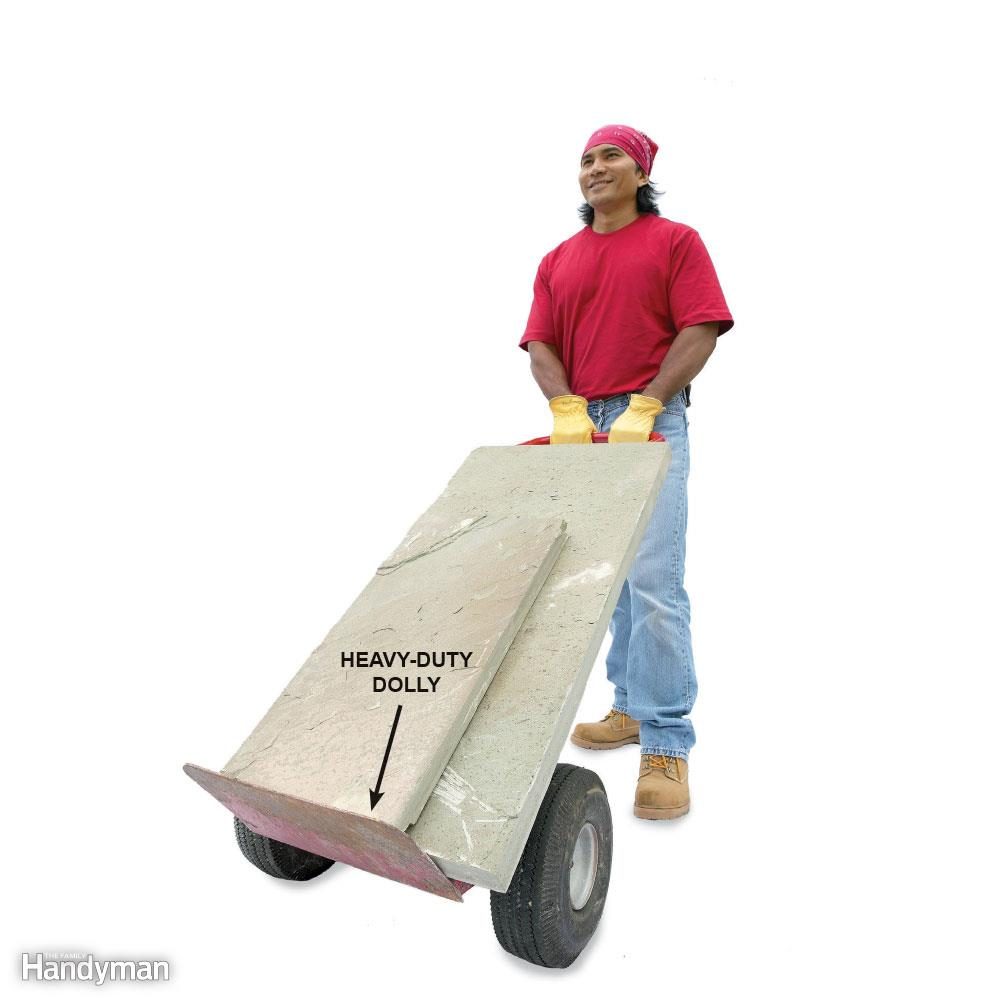
Save Your Back with Dollies
Heavy-duty two-wheel dollies ($40 and up) work great for moving flat stones and piles of brick. Special dollies called ball carts have a curved back to fit the root ball of a tree. These are available at some rental centers (about $24 per day) and are perfect for moving boulders. Get more tips for moving heavy stones here.
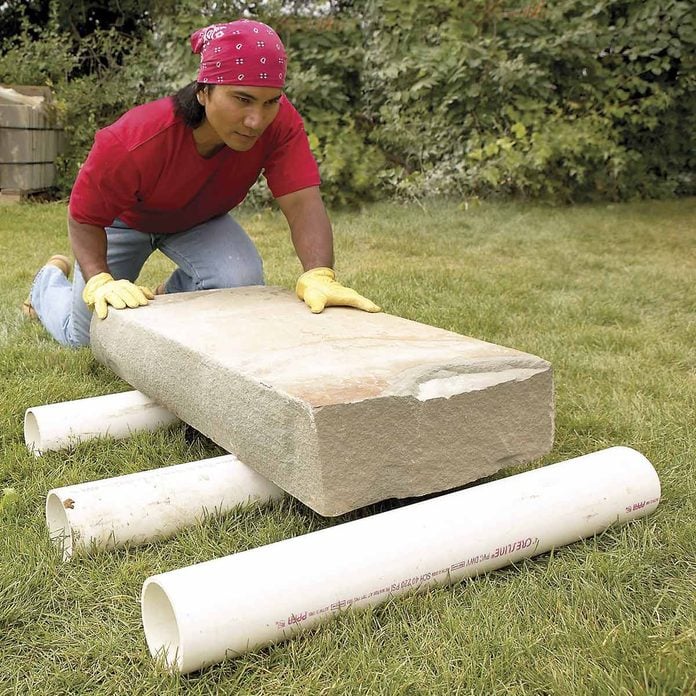
Roll Heavy Stones Over PVC Pipe
Move really heavy stones by rolling them over lengths of PVC pipe. A lot like the ancient Egyptians did.
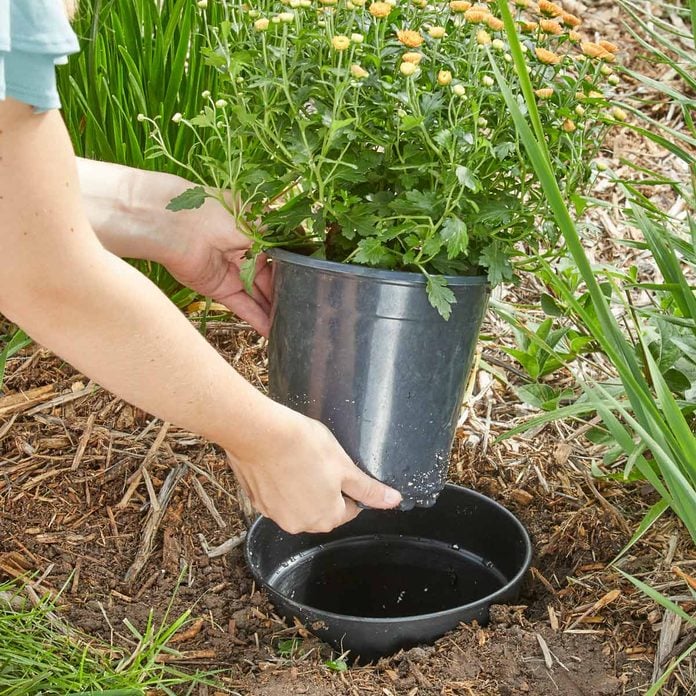
Plant-in-a-Pot Landscaping Design
Ever wish you could reorganize your garden after seeing how the mature plants look? Here’s a clever way to do it. You’ll need a bunch of pots of the same size, so they’ll nest in each other. Put your plants in doubled pots, and then bury them at ground level. Whenever you want a change, lift out the top pot and put in a different one. This method is also really slick for bringing plants indoors over the winter. This method is great for quickly changing out seasonal plants, and allows for easy experimentation with color and placement of plants and flowers.
Later, you can enjoy the view on a DIY picnic table.
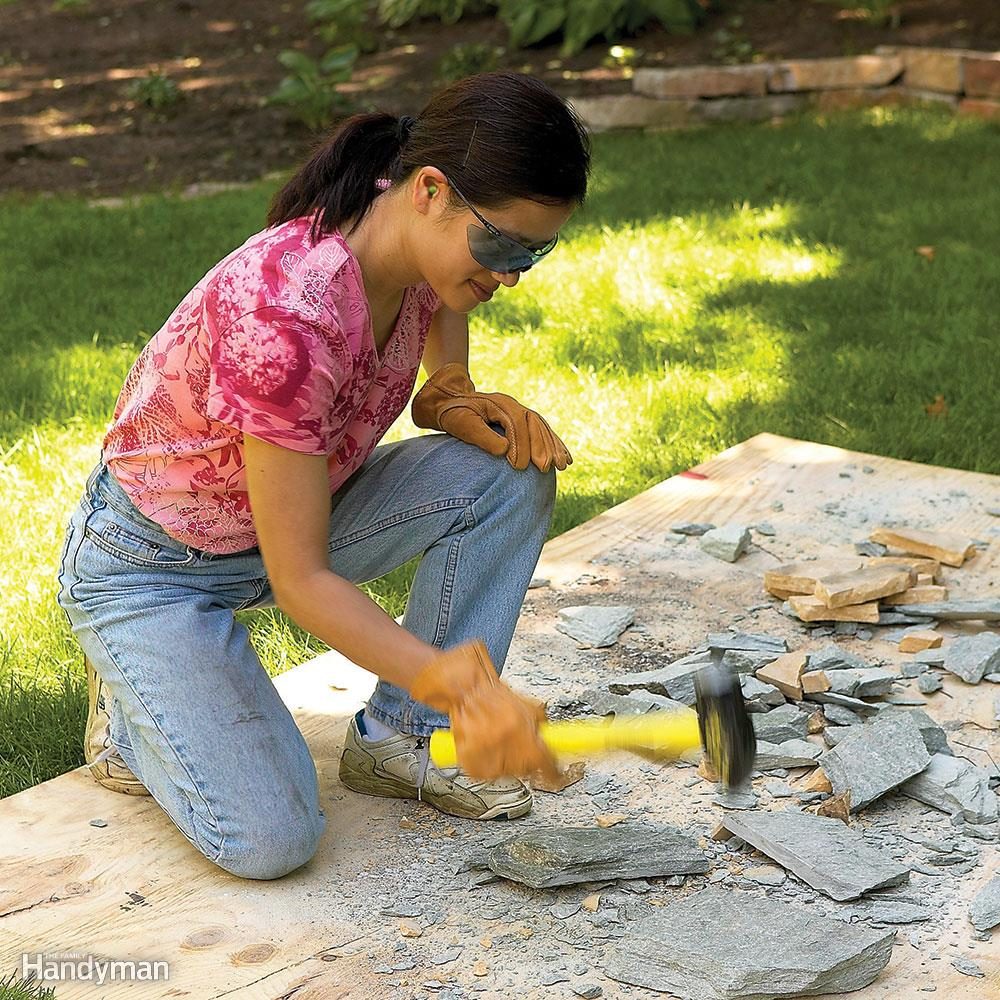
Cover Your Grass With Plywood
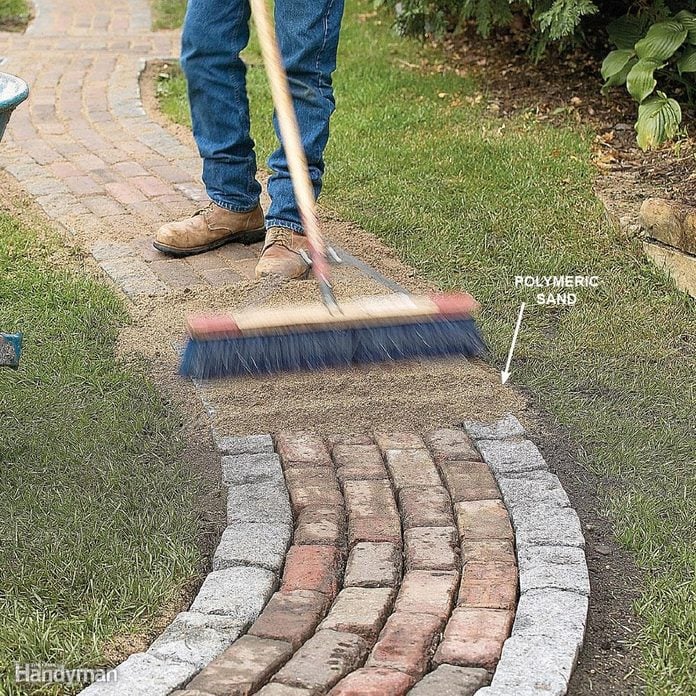
Keep Sand in the Cracks
Dry sand tends to get washed away or swept out of paver brick and stone patio joints. One solution is to use special polymeric sand that binds together when wetted. You can buy the polymeric additive and mix it with dry sand yourself, or you can buy premixed bags of sand. Premixed sand is the most convenient solution. A bag covers about 120 sq. ft. on paver bricks. Check with landscape suppliers and home centers. Make sure there is no sand on the surface of the brick or stone before you wet it.
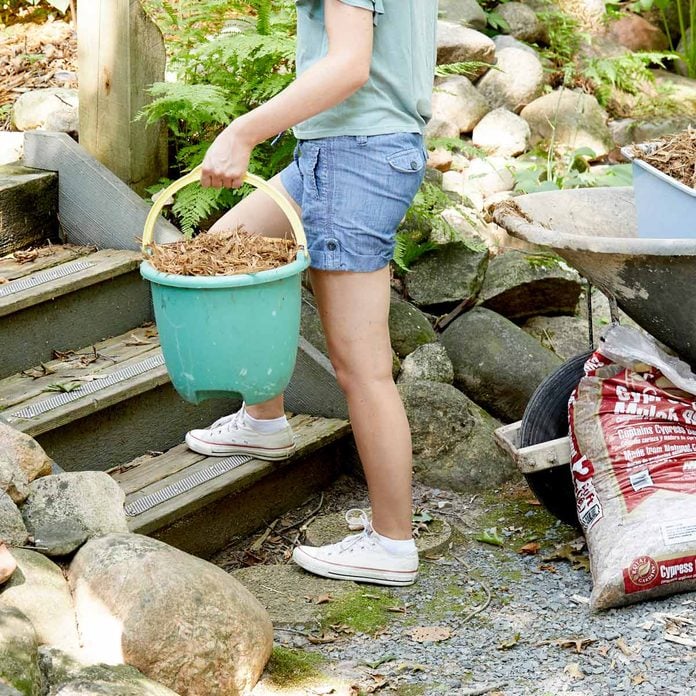
Easy Mulch Spreading
Getting mulch up close to flowers and bushes is easier if the mulch is in a small container. So I place buckets and pails in my wheelbarrow and fill them up with mulch. It doesn’t matter much if the mulch misses the bucket and lands in the wheelbarrow. Once you’re done dumping the buckets, dump what’s left in the wheelbarrow in an open area and spread it out. — Eric Swartz
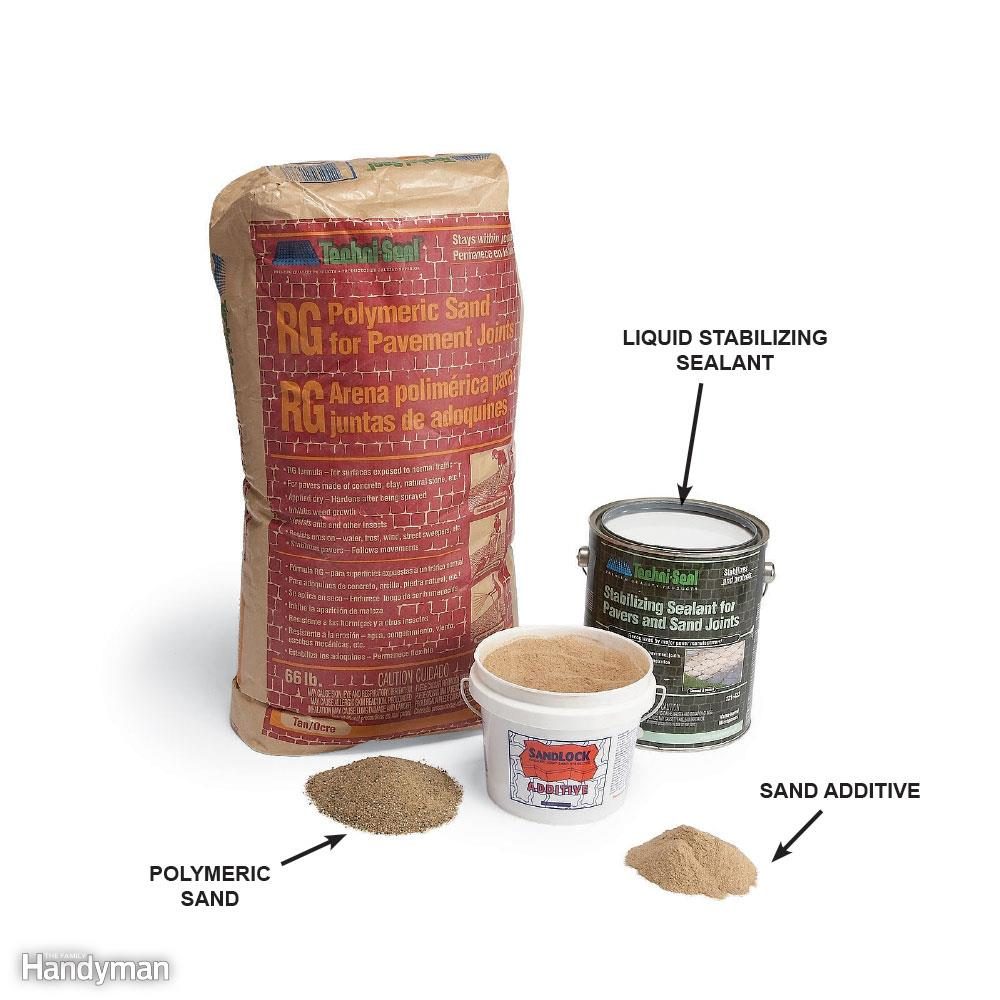
Apply a Stabilizing Sealant
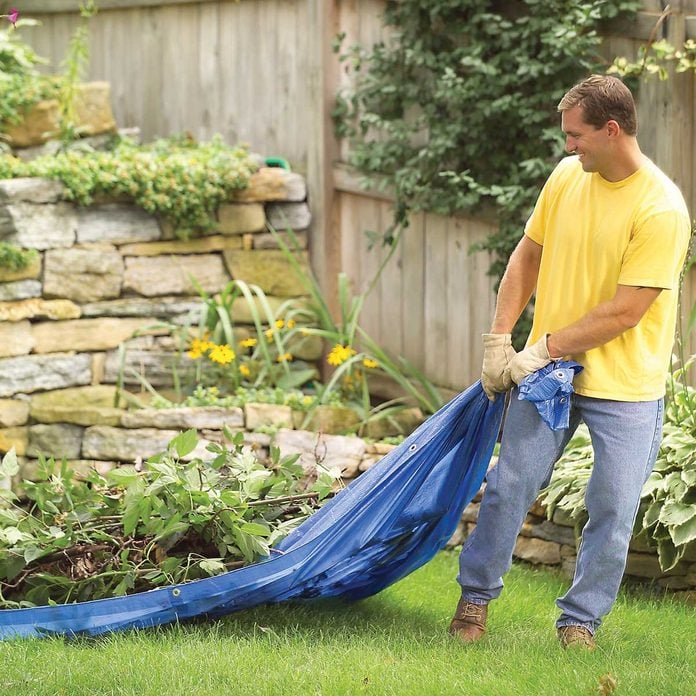
Invest in a Heavy-Duty Tarp
Nothing is quite so useful in landscaping projects as a durable tarp. It’s excellent for moving leaves, weeds, soil, and small rocks (among other materials) quickly and safely when working in the yard. You can also use it to cover plants or landscaping materials on a truck bed when transporting them or to protect projects from a fierce storm. Just don’t leave a tarp laying out on the lawn for too long, or it will kill your grass.
Wondering if your neighbors can have security cameras towards your house? Find out here.
You can also add outdoor privacy screens to make your area secluded for some peacefulness.
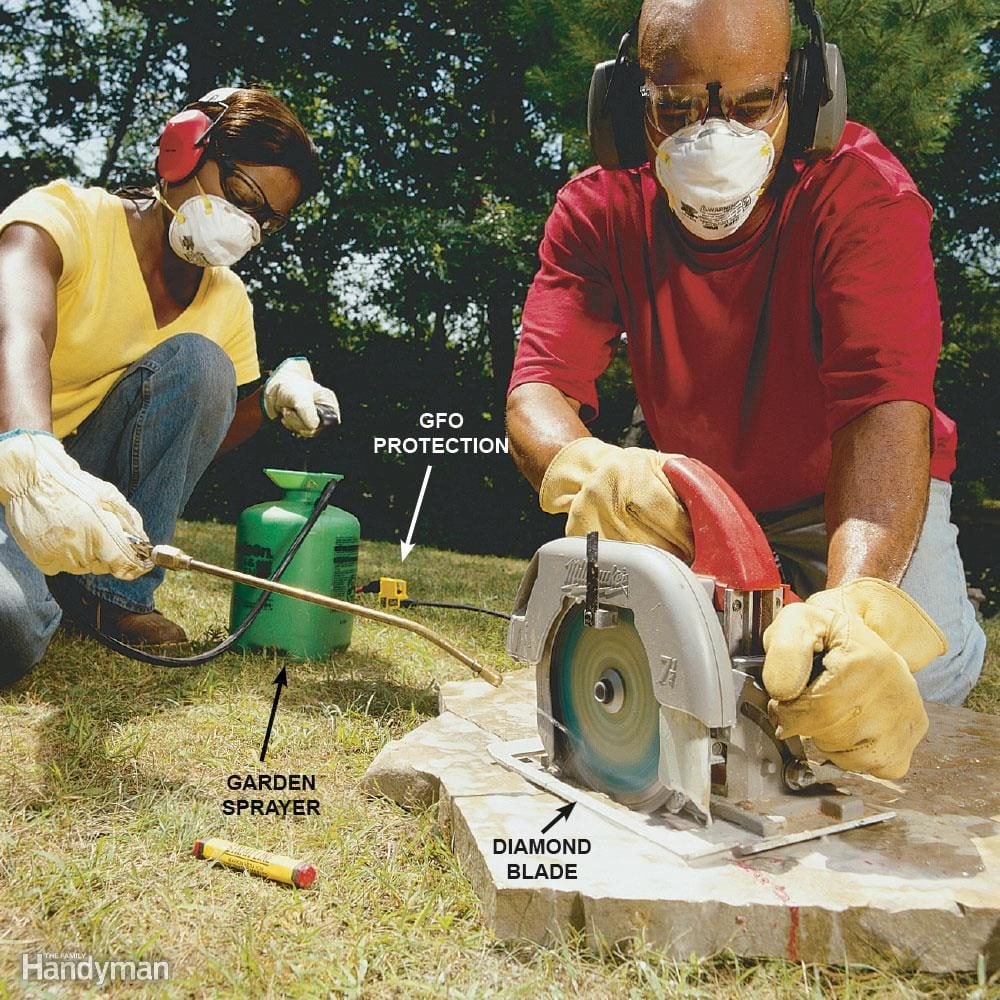
Spray Water to Keep the Dust Down
Spray water on the diamond blade when you're cutting concrete, bricks or blocks. The small, controllable stream from a garden sprayer works best. The water also cools the blade and speeds the cutting process. Make sure the saw is double insulated or has a grounded plug and is plugged into a working GFCI outlet or GFCI-protected cord. Learn more about cutting concrete here.
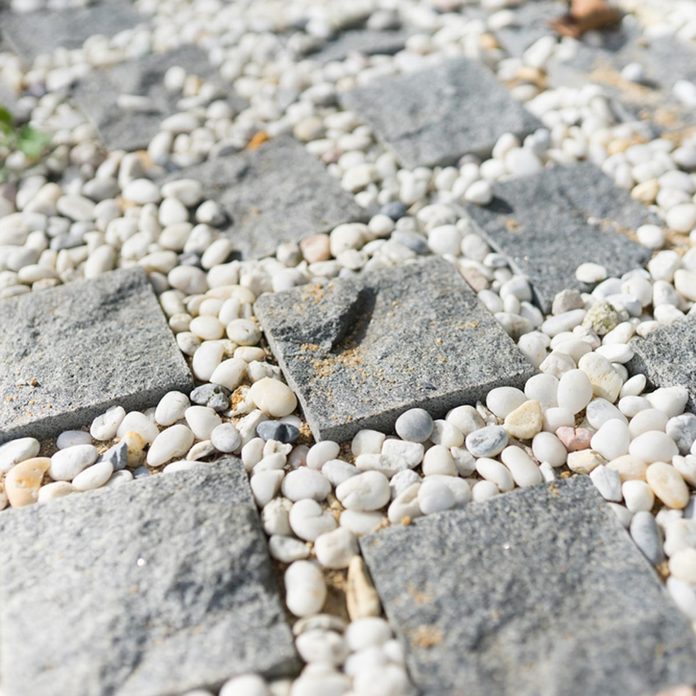
Hardscape with Permeable Materials
Inexpensive patio pavers set in a grid and surrounded by trap rock make an elegant, simple and environmentally friendly courtyard. Patios, walkways, courtyards and other hardscape elements add a bit of magic to any yard and reduce landscaping chores. Choose materials and designs that allow rainwater to permeate the soil to irrigate plantings, minimize erosion and prevent runoff. These include organic mulches, gravel, stone and permeable pavers.
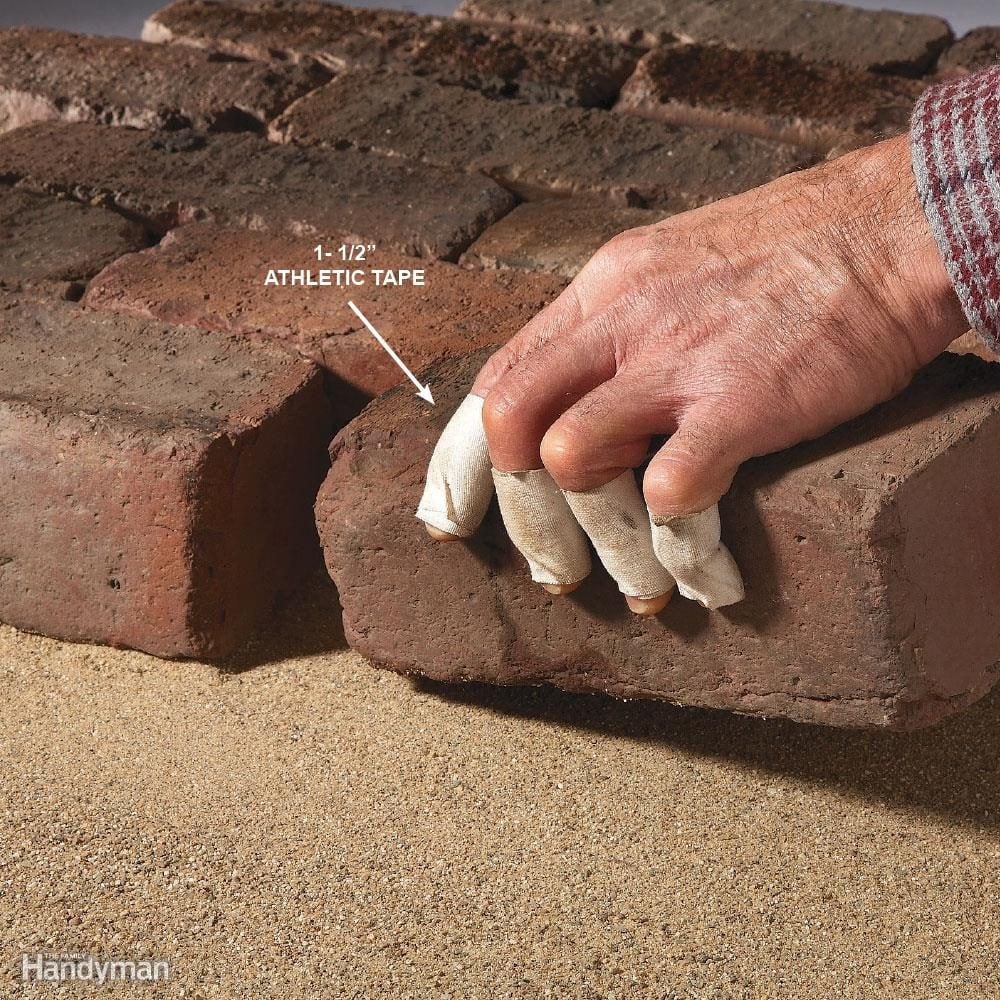
Save Your Fingertips with Athletic Tape
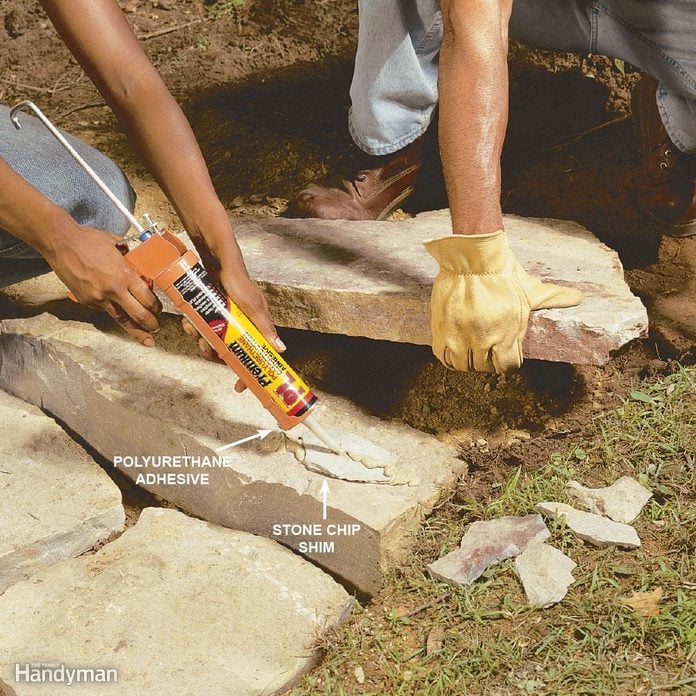
Use Polyurethane Adhesive
Mortar is traditionally used to secure the top courses of stone on a wall. But polyurethane adhesive does the same thing without the hard work and mess of mixing mortar or the skill needed to trowel it on. Also, polyurethane stays flexible, so it doesn’t crack and fall out like mortar does. Combine stone chips with the adhesive to shim stones to keep them steady until the adhesive cures. Polyurethane adhesive is available at home centers and is at least as strong as dedicated landscape adhesives.
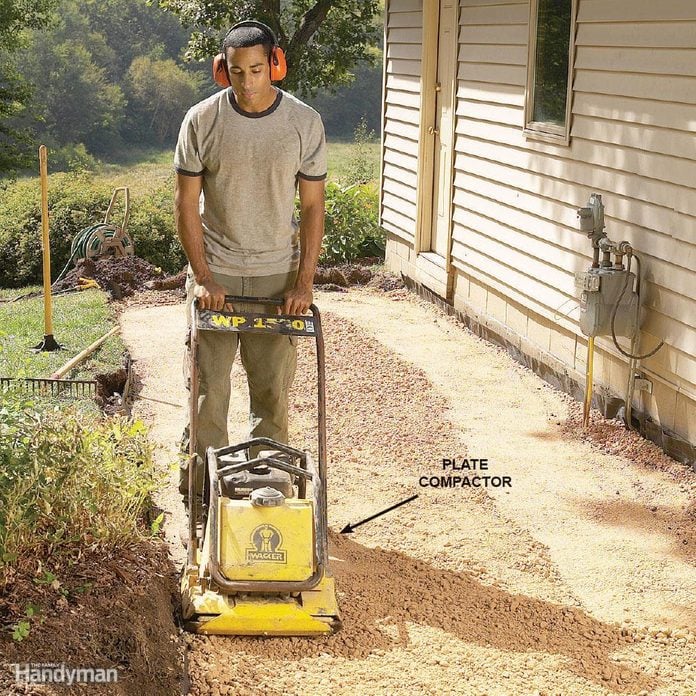
Pack Gravel in Layers
Depending on the type of soil, most paths, patios and walls require an 8- to 12-in.- deep compacted base of gravel. But if you just dump 8 in. of gravel into a trench and run a plate compactor over it, only the top few inches will be fully compacted. The uncompacted gravel will settle later, creating waves in the wall or path. For a fully compacted base that won’t settle, add the gravel in 2- or 3-in.-deep layers, and run the plate compactor over each layer before adding the next one.
If you want to make your backyard all the more exciting, you can add a backyard basketball court to the base gravel base!
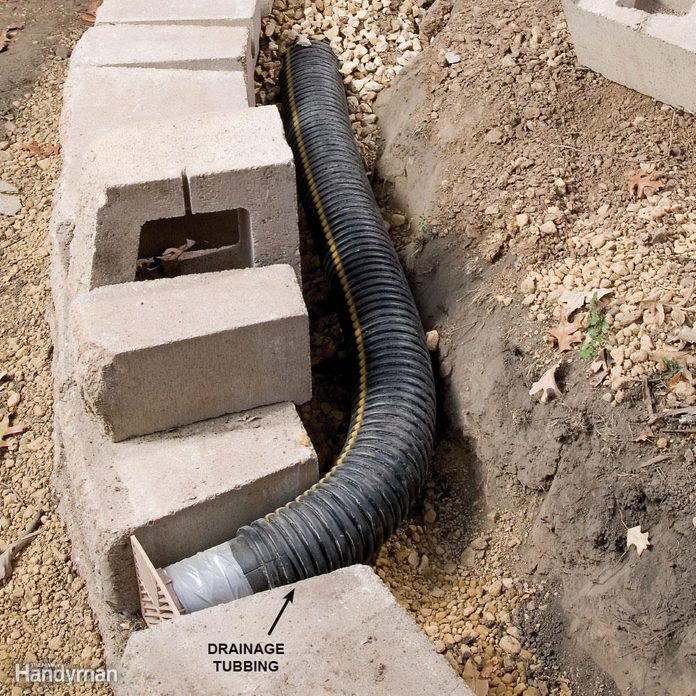
Build in Drainage for Long-Lasting Walls
Water-soaked soil is the worst enemy of retaining walls because it exerts enormous pressure behind the wall. Adding good drainage behind block or stone walls is crucial for long-lasting, bulge-free walls. Start by laying perforated plastic drainage tubing along the base of the wall slightly above ground level so it can drain to daylight. Slope the tubing about 1/4 in. per foot.
Next: Find out about transformer box in the yard.
